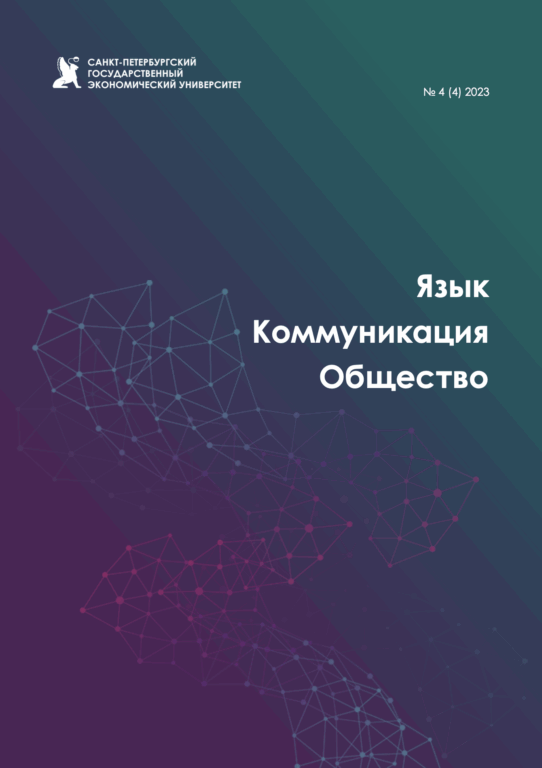(Kononova I. V., Melnichuk T. A.)
(Kurukalova E. S.)
(Troshchenkova E. V.)
(Kornilova E. E.)
(Nurbagomedova Z. R.)
(Pryakhina A. V., Bagdasaryan D. A.)

The fourth issue of the electronic scientific journal "Language. Communication. The Society" continues to develop an interdisciplinary approach to the study of current issues in the field of linguistics, media communications and philosophy. Each section offers an in-depth analysis of current trends reflecting the dynamics of society's development in the context of digital transformation.
Linguistics and intercultural communication
This section examines the issues of the semiotic organization of political discourse, the evolution of language tools in the digital environment, and the phenomenon of Internet memes as elements of modern communication. The authors analyze the dynamics of the semiotic characteristics of American election video ads, demonstrating how the interaction of verbal and non-verbal components is changing under the influence of technological progress and socio-cultural changes. The contrasting qualities of the plan of expression in English-language chat communication — redundancy and economy — are also studied, which reflects the specifics of informal polylogical communication in the Internet environment. The section concludes with an analysis of the reutilization of old memes in the context of new information guides, emphasizing their role as hubs of the axiological aspect of event representations and tools for deconstructing manipulative media techniques.
Media communications and journalism
The section is devoted to topical issues of media consumption, trust in information sources and technologies for creating multimedia content. The authors explore the confrontation between television and Telegram channels in the struggle for the audience, revealing correlations between the age of users, the level of trust in the media and their political preferences. It is emphasized that despite the growing popularity of digital platforms, television remains influential among older age groups, while Telegram is becoming a key source of information for young people and an active audience. Technologies for creating multimedia stories in a digital environment are also considered, including the use of artificial intelligence to generate visual content and storytelling as a means of audience engagement. The authors demonstrate how multimedia formats facilitate the communication of complex social, political, and moral meanings.
Philosophy
The philosophical section of the journal deals with issues of environmental interventions in visual research and media theory, the poetic word as a reflection of cultural identity and the scientific and philosophical heritage of prominent thinkers. The authors analyze how environmental discourse influences the reinterpretation of visual images and media practices, contributing to the formation of new ethical and aesthetic paradigms. The article examines the role of the poetic word in the context of military and historical events, emphasizing its importance for preserving cultural memory and national identity. The section concludes with an article devoted to the scientific and philosophical legacy of Konstantin Tsiolkovsky, revealing his contribution to the development of cosmic philosophy and ontological concepts.
The unifying idea of graduation is the interconnection of language, media and philosophy in the context of digitalization and global socio—cultural changes. The authors demonstrate how linguistic research, media communication, and philosophical reflection complement each other, forming a holistic understanding of modern communication processes. The journal continues to serve as a platform for scientific dialogue, bringing together experts from different fields of knowledge and contributing to the expansion of a single scientific and educational space.